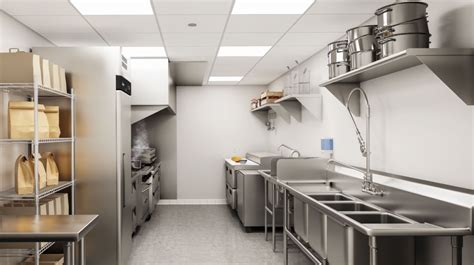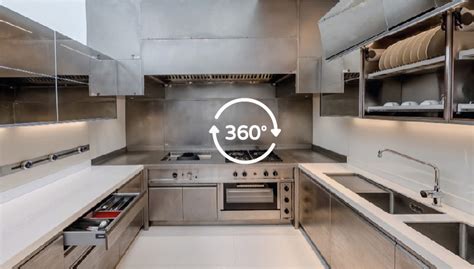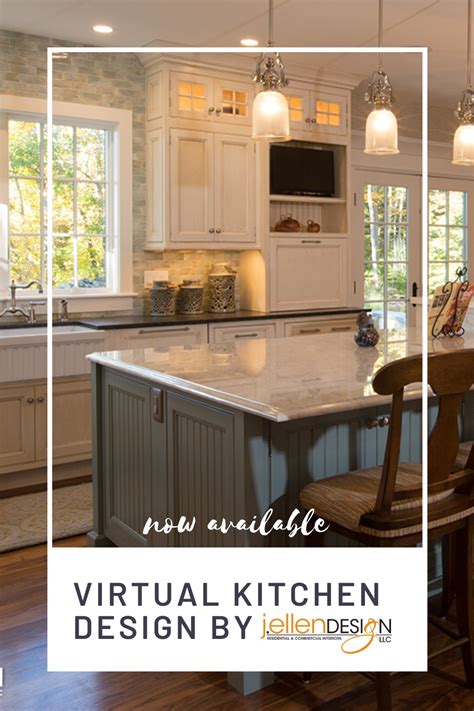Virtual Kitchen Delivery

The world of culinary delights has been revolutionized with the advent of virtual kitchen delivery systems. In an era where convenience and efficiency reign supreme, these innovative concepts have transformed the way we experience and indulge in our favorite dishes. From ghost kitchens to cloud kitchens, the rise of virtual kitchens has disrupted the traditional restaurant industry, offering a unique and modern approach to food delivery. This article delves into the intricacies of virtual kitchen delivery, exploring its evolution, the benefits it brings, and its impact on the culinary landscape.
The Evolution of Virtual Kitchen Delivery

Virtual kitchen delivery, often referred to as ghost kitchen or cloud kitchen operations, has its roots in the evolving food industry’s need for adaptability and cost-effectiveness. The concept gained traction as a response to the growing demand for delivery services and the increasing popularity of online food ordering platforms. It provides a flexible and efficient model for restaurants and food businesses to operate without the overhead costs associated with traditional brick-and-mortar establishments.
The evolution of virtual kitchen delivery can be traced back to the early 2010s when tech-savvy entrepreneurs began experimenting with innovative business models. These early pioneers recognized the potential of leveraging technology to streamline food preparation and delivery processes, ultimately creating a more efficient and profitable system.
Over the years, virtual kitchen delivery has evolved from a niche concept to a thriving industry. The COVID-19 pandemic further accelerated its growth, as social distancing measures and lockdown restrictions shifted consumer behavior towards contactless food delivery. This sudden shift in consumer preferences highlighted the resilience and adaptability of virtual kitchen operations, solidifying their place in the food industry landscape.
Benefits of Virtual Kitchen Delivery

The rise of virtual kitchen delivery has brought about a multitude of benefits, transforming the way food businesses operate and consumers experience culinary delights.
Cost Efficiency
One of the most significant advantages of virtual kitchen delivery is its cost-effectiveness. By eliminating the need for a physical dining space and associated overhead costs, such as rent, utilities, and staff for front-of-house operations, virtual kitchens offer a more affordable business model. This cost-efficient approach allows entrepreneurs and established restaurants alike to enter new markets, test concepts, and expand their reach without incurring substantial upfront expenses.
Flexibility and Scalability
Virtual kitchen delivery provides unparalleled flexibility and scalability for food businesses. With no physical limitations, operators can easily adapt to changing market demands, introduce new menu items, and scale their operations as needed. This agility enables them to stay ahead of trends, cater to diverse consumer preferences, and respond swiftly to fluctuations in demand.
Enhanced Operational Efficiency
The streamlined nature of virtual kitchen delivery enhances overall operational efficiency. By focusing solely on food preparation and delivery, operators can optimize their processes, minimize waste, and maximize output. The absence of dine-in customers also eliminates the need for complex table management systems and extensive waiting staff, allowing for a more focused and streamlined kitchen workflow.
Increased Brand Visibility
Virtual kitchen delivery offers an excellent opportunity for food brands to increase their visibility and reach a wider audience. By partnering with popular food delivery platforms, virtual kitchens can tap into existing customer bases and gain exposure to a diverse range of consumers. This strategy allows brands to build their reputation, expand their customer base, and establish a strong online presence.
How Virtual Kitchen Delivery Works
The inner workings of virtual kitchen delivery systems are a fascinating blend of technology, culinary expertise, and strategic business planning. At its core, the concept revolves around optimizing the food preparation and delivery process to provide a seamless and efficient experience for both customers and operators.
The Kitchen Setup
Virtual kitchens are typically equipped with state-of-the-art commercial-grade appliances and specialized cooking equipment. These facilities are designed to accommodate multiple food concepts, ensuring that operators can efficiently switch between different menus without compromising on quality or speed. The layout and organization of the kitchen are carefully planned to maximize workflow efficiency and minimize wait times.
One unique aspect of virtual kitchen setups is the absence of a traditional dining area. Instead, the focus is on creating an efficient production line, with designated stations for food preparation, packaging, and order fulfillment. This streamlined design allows for quick turnover and enables operators to handle a high volume of orders simultaneously.
Technology Integration
Technology plays a pivotal role in the success of virtual kitchen delivery systems. Advanced kitchen management software is utilized to streamline order management, track inventory levels, and optimize the cooking process. This software integrates with popular food delivery platforms, allowing operators to receive real-time order updates and manage their operations efficiently.
Additionally, virtual kitchens often employ innovative technologies such as automated order fulfillment systems, which further enhance efficiency and reduce human error. These systems can include robotic arms for precise food assembly and packaging, as well as advanced tracking systems to monitor the progress of each order.
Order Fulfillment and Delivery
Once an order is placed through a food delivery platform, the virtual kitchen’s operations team springs into action. Skilled chefs and kitchen staff prepare the dishes according to the specified menu and cooking instructions. The prepared meals are then carefully packaged to maintain freshness and quality during transit.
Virtual kitchens often partner with reliable delivery service providers or utilize their own fleet of delivery personnel. These delivery partners ensure that orders are promptly dispatched and delivered to customers' doorsteps. The entire process, from order placement to delivery, is carefully monitored and optimized to provide the best possible experience for both the operator and the customer.
The Impact on the Culinary Landscape
The rise of virtual kitchen delivery has had a profound impact on the culinary landscape, reshaping the way we think about and experience food.
Consumer Convenience
Virtual kitchen delivery has revolutionized the way consumers access and enjoy their favorite dishes. With just a few clicks on a food delivery app, customers can now indulge in a wide array of culinary options, regardless of their location. This unprecedented convenience has led to a significant shift in consumer behavior, with an increasing preference for home-delivered meals over traditional dine-in experiences.
Diverse Culinary Offerings
The virtual kitchen model has opened up new avenues for culinary exploration and experimentation. By eliminating the need for physical restaurants, operators can focus solely on creating unique and innovative menu items without the constraints of a traditional dining space. This has led to a proliferation of diverse food concepts, from niche ethnic cuisines to specialty diets and fusion dishes, providing consumers with an endless array of options to satisfy their cravings.
Empowering Small Businesses
Virtual kitchen delivery has emerged as a powerful tool for small businesses and independent chefs to establish and grow their brands. The low barrier to entry and cost-efficient nature of virtual kitchens allow aspiring entrepreneurs to test their culinary concepts without the financial risks associated with traditional restaurant ventures. This has fostered a thriving ecosystem of innovative food businesses, enriching the culinary landscape with fresh ideas and unique flavors.
Challenges and Future Prospects
While virtual kitchen delivery has undoubtedly transformed the food industry, it is not without its challenges. One of the primary concerns is ensuring the quality and consistency of dishes across multiple delivery platforms. Maintaining high standards and providing a premium dining experience despite the absence of a physical restaurant space requires meticulous attention to detail and a deep understanding of consumer expectations.
Looking ahead, the future of virtual kitchen delivery appears bright. As technology continues to advance and consumer preferences evolve, we can expect further innovations in this space. The integration of AI-powered kitchen assistants, advanced food delivery drones, and personalized menu recommendations based on individual taste preferences are just a glimpse into the future of virtual kitchen operations.
Furthermore, the continued focus on sustainability and environmental responsibility within the food industry is likely to shape the future of virtual kitchen delivery. Operators may explore eco-friendly packaging solutions, optimize delivery routes to minimize carbon footprint, and implement waste reduction strategies to create a more sustainable culinary ecosystem.
FAQ

How does virtual kitchen delivery compare to traditional restaurant operations in terms of costs?
+Virtual kitchen delivery offers significant cost savings compared to traditional restaurant operations. By eliminating the need for a physical dining space and associated overhead costs, virtual kitchens can operate with reduced expenses. This cost-efficient model allows for greater financial flexibility and scalability, making it an attractive option for both new and established food businesses.
What are some popular virtual kitchen delivery platforms?
+Several popular virtual kitchen delivery platforms have emerged in recent years. Some notable examples include CloudKitchens, Kitchen United, and Reef Kitchens. These platforms provide a seamless and efficient infrastructure for food businesses to operate virtual kitchens and connect with delivery services.
How can virtual kitchen delivery impact local communities and small businesses?
+Virtual kitchen delivery has the potential to greatly benefit local communities and small businesses. It provides a platform for aspiring entrepreneurs and independent chefs to launch their culinary concepts without the financial burden of traditional restaurant ventures. This empowerment of small businesses can lead to a thriving local food scene, fostering innovation and creating new job opportunities.



